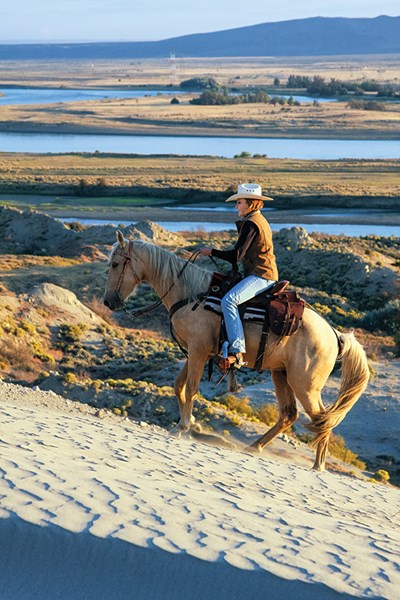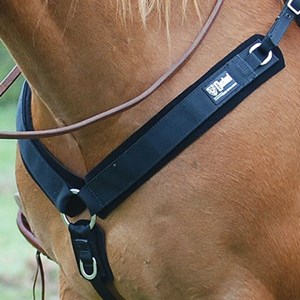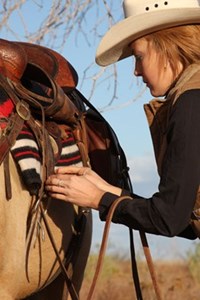
On the trail, saddle fit is all important. Optimal saddle fit will help your horse stay sound and saddle-sore free — and will enhance your own comfort — even during long rides over challenging terrain.
Here, we give you 10 at-a-glance saddle tips — seven for your horse and three for you — designed to improve your trail rides, no matter what type of saddle you ride in.
1. Go light. Tired of hefting a 40-pound saddle onto your horse’s back? Consider investing in a lightweight trail saddle. Saddles made specifically for trail riding tend to weigh less than those made for roping and other Western events.
2. Evaluate overall fit. The way your saddle fits your horse is the key to his comfort and soundness on the trail. The bars — the part of the saddle tree that lie on either side of your horse’s spine — should lie along the back muscles without touching the spine itself. The saddle’s front arch should be high enough to leave his withers free. It should also be wide enough and angled so that his shoulders can slide back and forth freely. (For more on saddle fit, function, and design, order About Saddle Fit, a videotape by saddlemaker and clinician Dave Genadek, About the Horse, Inc., 800/449-7409; www.aboutthehorse.com.)

3. Watch for shape-changing. Horses can change shape for any number of reasons, including weight gain or loss, muscle gain or loss, or simply due to the aging process. A saddle that was perfect for last year’s trail rides might not be perfect this year.
4. Select the right cinch. If your saddle doesn’t fit, don’t count on the cinch to put things right. Overtightening the front cinch will only make your horse uncomfortable. If your saddle is double-rigged to accommodate a back cinch, use both cinches, and use a connector strap for security. Select a cinch that’s easy to clean, won’t pick up trail detritus, and won’t rub or pinch your horse. Mohair cinches are tops, but neoprene cinches are a close second. (Caveat: Unlike mohair, a neoprene cinch doesn’t breathe and can be overtightened.) Avoid fleece and faux-fleece, which are burr magnets.
5. Consider a back cinch. Consider a back cinch if your trails are steep, or if you’re not entirely secure in the saddle. A back cinch stabilizes a saddle, which leads to rider stability, as well. (Tip: Before you hit the trail in a back cinch for the first time, saddle your horse and longe or lead him, so he gets used to the feel. Check for any rubbing.)
6. Consider a breastcollar. A breastcollar will help prevent your saddle from sliding toward your horse’s rump going uphill. It will also help reduce risk of saddle sores. Select a wide, flat breastcollar made from heavy leather for equine comfort, or consider neoprene. Again, avoid anything made from fleece.

7. Consider a crupper. A crupper — which runs from the back of the saddle under your horse’s tail — will help prevent the saddle from sliding forward while going downhill. A crupper is especially recommended if your horse has low, flat withers. For optimal fit, make sure you can fit two stacked fingers between the strap and your horse’s rump. Help your horse adjust to a crupper the same way you would a back cinch, noted above.
8. Check seat fit. Your saddle’s seat should be comfortable. Check fit before the first trail ride of the year; they say a saddle seat can shrink over the winter — at least, that’s my excuse! You should be able to relax in the seat without it getting too “up close and personal,” either in the front or the back. You should also be able to stand in your stirrups and sit down again without moving your lower legs or feeling as though you might fall forward onto your horse’s neck.
9. Invest in wide stirrups. When you’re riding all day, you want wide, flat stirrups that will give you maximum support over the ball of your foot. Consider investing in special trail stirrups with extra-wide treads. Also look for shock-absorbing pads, which can enhance foot and joint comfort.
10. Don’t fight the stirrup. If you ride in a Western saddle, and are plagued with sore ankles and knees, you might be trying to keep your feet pointing forward in stirrups whose natural position is sideways! Some riders place the saddle on a chair, soak the fenders with water, twist them into the desired position, then put a broomstick through the stirrups to hold the fenders in that position until they dry.
Jessica Jahiel, PhD (www.jessicajahiel.com), is an internationally recognized clinician and lecturer, and an award-winning author of books on horses, riding, and training. Her e-mail newsletter (www.horse-sense.org) is a popular worldwide resource.






